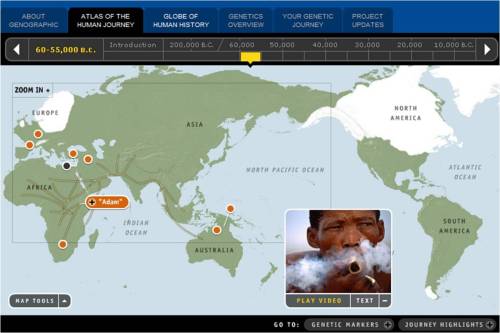Relevant to Cyprus, the Eastern Mediterranean, and tracing migrations of human history, geneticists have recently published conclusions that the Phoenicians left deep genetic mark in this part of the world.
Scientists reported Thursday that as many as 1 in 17 men living today on the coasts of North Africa and southern Europe may have a Phoenician direct male-line ancestor.
These men were found to retain identifiable genetic signatures from the nearly 1,000 years the Phoenicians were a dominant seafaring commercial power in the Mediterranean basin, until their conquest by Rome in the 2nd century B.C.
The study was directed by the Genographic Project, a partnership of the National Geographic Society and IBM Corporation, with additional support from the Waitt Family Foundation. The international team described the findings in the current American Journal of Human Genetics.
Samples of the male Y-chromosome were collected from 1,330 men now living at six sites known to have been settled in antiquity as colonies and trading outposts of the Phoenicians. The sites were in Cyprus, Malta, Morocco, the West Bank, Syria and Tunisia.
Each participant, whose inner cheek was swabbed for the samples, had at least three generations of indigenous ancestry at the site. To this was added data already available from Lebanon and previously published chromosome findings from nearly 6,000 men at 56 sites throughout the Mediterranean region. The data were then compared with similar research from neighboring communities having no link to Phoenician settlers.
From the research emerged a distinctive Phoenician genetic signature, in contrast to genetic traces spread by other migrations, like those of late Stone-Age farmers, Greek colonists and the Jewish Diaspora. The scientists thus concluded that, for example, one boy in each school class from Cyprus to Tunis may be a descendant of Phoenician traders.
The Genographic Project is really quite interesting. The atlas of the human journey is particularly fascinating. It includes interactive graphics packed with information taken from archaeology and now genetics, at important points along the time-line from the past 200,000 years. For example, check out this screenshot, which shows “journey highlights” of 50,000-60,000 years ago based on archaeology:
Later on along the time-line, genetics help to refine the journey. For instance, check out this screenshot of Y-chromosome migration routes (lines) and mitochondrial DNA migration routes (dots) from about 40,000 years ago:
And then there are in-depth descriptions of over 60 major migrations in human history for the past seven thousand years… and the dispersal of Phoenicians throughout the Mediterranean are just one of these stories.


